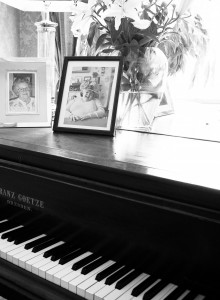Different types of Dementia
There are many different types of dementia, and some people may suffer from a combination of types. Here are some of the most common types of dementia, how they occur, and their symptoms.
Dementia is an umbrella term used to describe a variety of brain illnesses that affect cognition, often perception and the ability to perform everyday activities. When a person suffers from two types of dementia together, it’s called Mixed Dementia. This isn’t uncommon, but whatever the diagnosis, each person will experience their disorder in their unique way.
Alzheimer’s Disease
The most common cause of dementia in the UK today is Alzheimer’s Disease, affecting an estimated 850,000 people. Most people who develop Alzheimer’s do so after the age of 65, but younger people can also get it. Early signs of Alzheimer’s are usually associated with memory loss. During the course of the disease, abnormal clusters of protein fragments build up in the brain. This causes a loss of connections between nerve cells. Eventually, these nerve cells die, resulting in the gradual loss of brain tissue. People with Alzheimer’s also tend to have a shortage of those chemicals in the brain which help transmit signals between brain cells. A shortage of chemical transmitters results in information and signals not being transmitted effectively. Find out More
Vascular Dementia
Problems with blood supply to the brain cause this type of dementia. It could occur after a stroke or as a result of blocked arteries, blood clots, or damage to the blood vessels in the brain. The symptoms of vascular dementia vary and may overlap with those of Alzheimer’s disease. These can manifest as memory loss and problems with reasoning, concentration, speech, and visuospatial skills. Affecting 150,000 people in the UK, vascular dementia is the second most common type of dementia.
Dementia with Lewy Bodies
Closely related to Parkinson’s disease, Dementia with Lewy (DLB) bodies often has some of the same symptoms. These include cognitive problems with attention, fluctuating alertness, and movement. There may be periods when speech becomes disorganised. Sleep disturbance is also common, as are hallucinations, delusions, and difficulties judging distance. With DLB, memory is usually less affected than early Alzheimer’s disease.
Lewy bodies are abnormal structures formed of tiny protein deposits that develop inside brain cells. How someone is affected by DLB partly depends on where in their brain the Lewy bodies form. Many other progressive disorders caused by Lewy bodies affect the brain and nervous system, including Parkinson’s Disease. DLB is often also referred to by other names, such as Lewy body dementia, Lewy body variant, Cortical Lewy body disease, and diffuse Lewy body disease.
Frontotemporal dementia
In this type of dementia, the front and side lobes of the brain are damaged. It occurs when nerve cells in those lobes die, the pathways that connect the lobes change, and chemical transmitters that deliver signals between nerve cells are also lost. As the disease progresses, the death of more nerve cells causes the brain tissue in the front and side lobes to shrink.
There are three main types of FTD, and the symptoms of the disorder will depend on which type a person has. These are:
- Behavioral Variant FTD
- Progressive non-fluent Aphasia
- Semantic Dementia
The Behavioral Variant is the most common type. Signs and symptoms include behavioural changes like apathy, a loss of sympathy, empathy, and inhibitions, and repetitive, compulsive behaviour such as hoarding and timekeeping.
Progressive non-fluent Aphasia and Semantic Dementia are referred to as the language variants. This variant of FTD causes difficulties with language, which appear slowly but gradually get worse. Symptoms include slow, hesitant speech, errors in grammar, impaired understanding, not knowing the meaning of familiar words or not being able to find the right word, and difficulty recognising familiar people and objects.
Up to 20% of people with FTD also develop a motor disorder, which causes difficulties with movement. These are Motor neurone disease, Progressive supranuclear palsy, and Corticobasal degeneration.
Some of the information in this section has been sourced from the Alzheimer’s Society website.

















